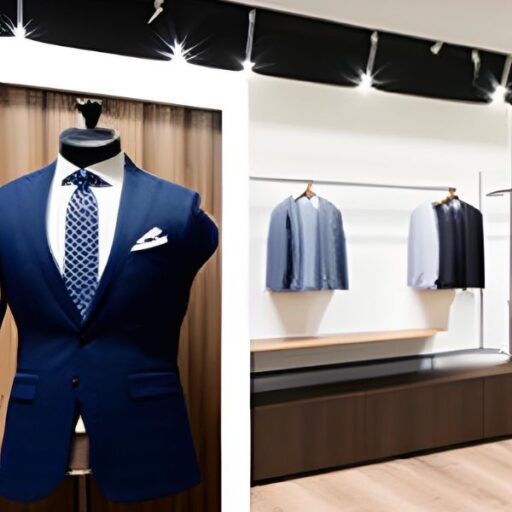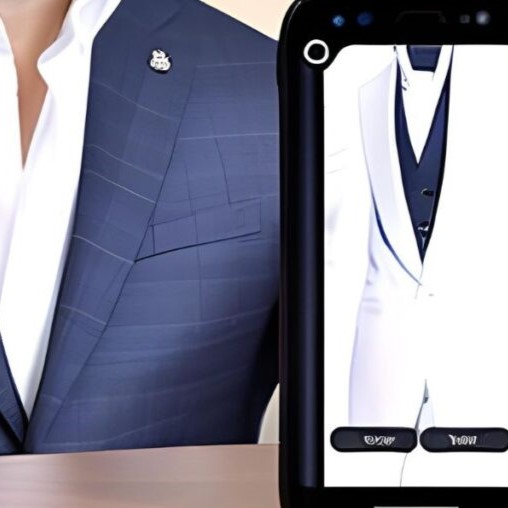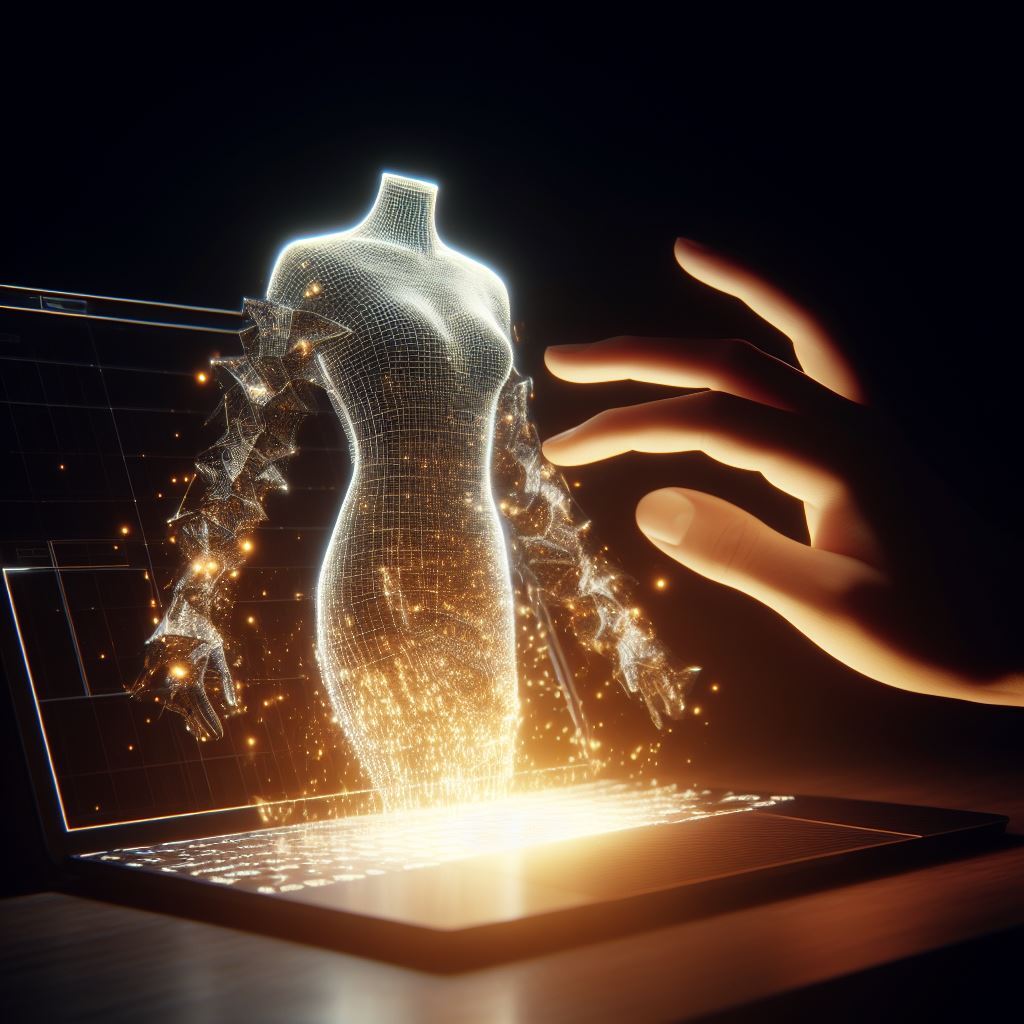Virtual try-on in fashion: what is it and what are its benefits?
published on
Virtual try-on is a technology that allows users to visualize a particular product or, within the fashion world, a specific piece of clothing, without having to physically try it on before buying it. Virtual try-on is made possible by augmented reality (AR) or ad-hoc visors. These are tools that enable 360° experiential immersion. They facilitate decision-making and purchasing, even remotely and at any time. Additionally, these technologies are becoming increasingly relevant within fashion e-commerce: research conducted by Threekit highlights how AR is supporting customers in visualizing and customizing their products in 3D.
Furthermore, research foregrounds the current and future growth of these technologies, primarily due to the willingness and open-mindedness shown by consumers.
Suffice it to say that 71% say they would be willing to shop more frequently if they could benefit from AR technology. 40%, on the other hand, would be willing to pay more for a product if it were customized through AR tools.

How does virtual try-on technology work?
Firstly, virtual try-on technology leverages AR to create a virtual environment that stimulates the experience of trying and, later, buying a particular product. Crucially, the camera on the user’s proprietary devices allows the virtual image of the product to be superimposed on that of the person.
Therefore, it is possible to see how the garment will appear worn. These technologies are becoming increasingly important within the retail sector.
In fact, companies are approaching a type of customer base that is distinguished by the importance they place on the time factor. People are increasingly oriented to judge the latter as one of the decisive factors in choosing a product/service.
Indeed, it is good to consider that, now more than ever, consumers have extremely high expectations and are no longer afraid, as they used to be, to abandon their target brand in order to select more accessible and interesting options.
To this day, we are bombarded by external inputs and stimuli. Consequently, capturing attention means offering customers exactly what they want, when they want it, and through the most effective way.
Consequently, the goal is to ensure an experience that is consistent with consumer’s expectations. Every contact sholud be an opportunity to intensify the relationship between the brand and the consumer. It is essential to create a bond of trust that can last, even when subject to a wide range of alternative choices.
Benefits of virtual try-on
The ability of augmented reality to deepen the concept of content visualization is helping to shape new horizons for brands’ sales strategies.
Regardless, these technologies allow them to reach their existing and potential customers anytime and anywhere, crossing physical boundaries and bypassing the “limitations” that generally characterize point-of-sale purchasing.
What, then, are the benefits offered by virtual try-on? Let’s see them together!
- Increased customer engagement: virtual try-on enhances the online shopping experience by engaging customers more actively. Since customers have the opportunity to see how clothing will fit their physicality, a deeper sense of connection with the product and greater confidence in the purchase is facilitated
- Lower return rate: one of the main challenges of fashion e-commerce is the number of returns that are made because garments do not fit correctly or in the way hoped. It is important to consider an increasingly prominent trend that sees returns as an integral and constitutive part of the process of choosing and buying a particular product. Virtual try-on helps reduce this issue: customers, in fact, can see in advance how the garment will look once worn. In this way, more informed purchasing decisions can be made. The impact of this benefit is also felt in terms of sustainability, thanks to a reduction in the environmental impact caused by transportation and the return of goods
- Outfit customization: virtual try-on technology can suggest combinations, details, and accessories for users to complete the look. Customers can experiment with different combinations without having to physically try on each garment in the store
- Saving time and effort: customers no longer have to go to stores to try on garments. This results in considerable savings in time and effort, especially at a time in history when time is considered the most important and valuable asset of all
- Global market expansion: even for the most skeptical, technologies will become one of the main drivers driving industry transformation. Adapting and turning this trend in one’s favor will therefore become critical to continue to be attractive and competitive in the marketplace
- Data analysis: data and information collected through virtual try-on can provide important insights into customer preferences and fashion trends. This allows brands to optimize their collections and marketing strategies

Impact of virtual try-on on fashion
Virtual try-on in the fashion industry is generating an increasingly significant impact as technology evolves. Among these, for example, are clothing, and going into more detail, product categories such as shoes, bags, accessories, and swimwear.
Many platforms are integrating artificial intelligence to offer greater personalization. An app, for instance, could suggest combinations based on the user’s personal style, the season, or the event they are preparing for.
Regarding measurements, it is possible to integrate technology that allows for accurate body measurements to ensure that the clothes fit perfectly. This can help reduce the number of returns due to incorrect sizes. In terms of technology, there is also a move towards the concept of visual realism. How? Through the use of advanced graphics, real-time rendering, and 3D modeling. The goal is to make virtual objects as similar as possible to real ones.
In the meantime, augmented reality (AR) and virtual reality (VR) are also making their way into the fashion industry. While the former allows users to virtually overlay clothing onto their bodies through their smartphone’s camera, the latter enables the creation of immersive virtual shopping experiences.
A transformative shift
Surely, virtual try-on contributes to revolutionizing the concept of online shopping. It enables the emprovement of the quality of interaction between consumers and brands.
With the advent of augmented reality (AR) technology, the retail industry is witnessing a transformative shift, presenting itself with numerous new opportunities. The primary objective of implementing AR in retail is to provide customers with an enhanced and tailored shopping experience that is both efficient and captivating. This revolutionary technology aims to make fashion e-commerce more accessible and thrilling for customers across the globe.
AR technology brings about a whole new dimension to retail, seamlessly blending the physical and virtual worlds. By overlaying digital information onto the real world, AR allows customers to virtually try on clothes, accessories, or even entire outfits without physically being present in a store. This eliminates the limitations of traditional brick-and-mortar shopping, providing customers with the convenience of exploring various fashion options from the comfort of their own homes.
Personalization as a key driver
The personalized aspect of AR in retail is a key driving force behind its success. Through the use of AR, retailers can gather data on customers’ preferences, sizes, and style choices.

This information enables them to tailor recommendations and suggestions, ensuring that customers are presented with products that align with their individual tastes and requirements.
Consequently, customers feel more valued and understood, fostering a deeper connection between the brand and the consumer.
Moreover, the efficiency of AR technology streamlines the purchasing process. With the ability to virtually try on products, customers can make more informed decisions regarding their purchases, reducing the likelihood of returns and exchanges.
Additionally, AR enables customers to visualize how a particular item will fit and look on them, eliminating any uncertainty and boosting their confidence in making a purchase. This not only saves time for customers but also enhances their overall shopping experience.
The engagement factor
The engagement factor is another significant advantage of AR in retail. By immersing customers in a visually captivating and interactive environment, AR creates an exciting and memorable shopping experience. Retailers can utilize AR to gamify the shopping process, encouraging customers to actively participate and explore different fashion options. This fosters a sense of excitement and adventure, making the overall shopping journey more enjoyable and unforgettable.
AR serving retail
In conclusion, AR technology is revolutionizing the retail industry by offering a personalized, efficient, and engaging service that elevates the fashion e-commerce experience. By seamlessly integrating the physical and virtual worlds, AR allows customers to virtually try on products, providing convenience and accessibility. The personalization aspect ensures
that customers receive tailored recommendations, enhancing their connection with the brand. Additionally, the efficiency and engagement factors further contribute to an exceptional shopping experience. With AR technology, retail is embracing a new era of innovation and customer-centricity.
